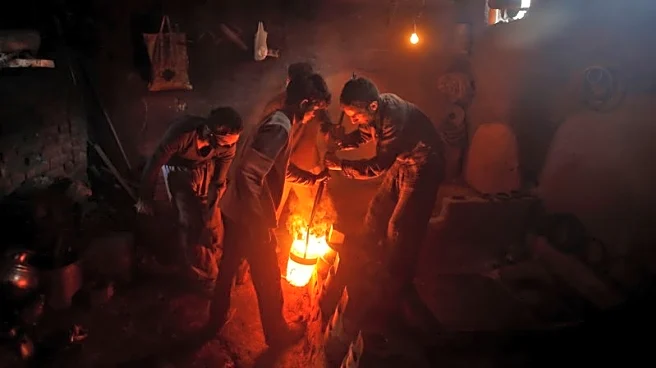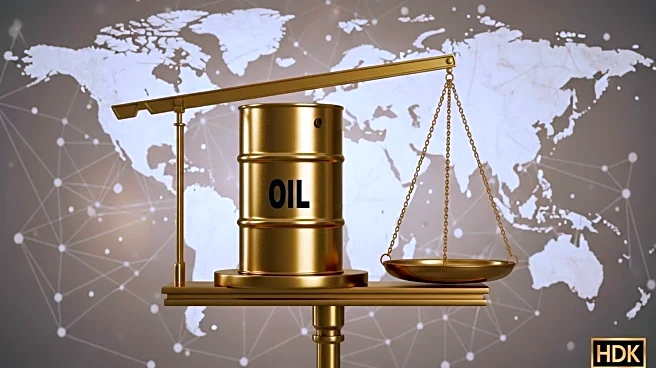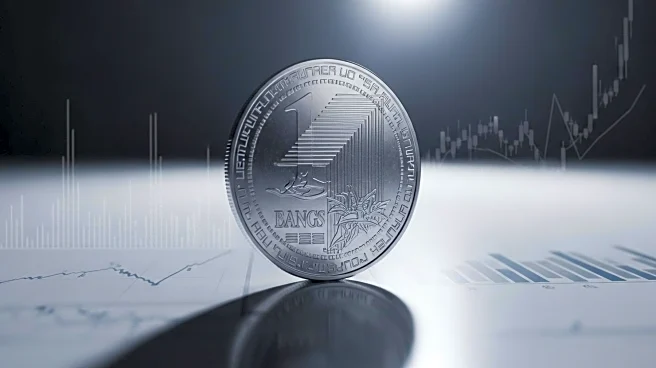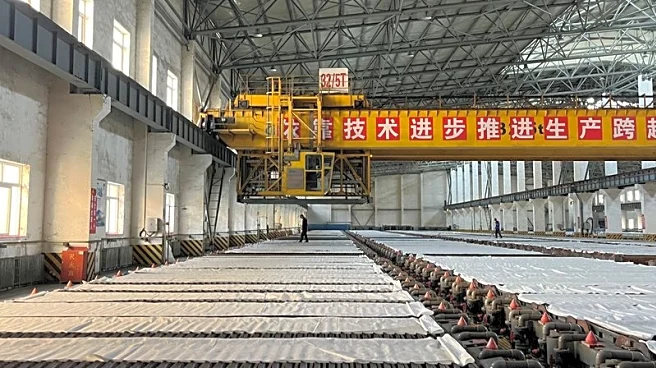What is the story about?
What's Happening?
The copper market is experiencing significant volatility due to a combination of factors including economic policies, tariffs, and the global transition to green energy. Experts had anticipated a surge in copper prices, with predictions of a 75% increase in 2025. Goldman Sachs highlighted a potential supply deficit exceeding half a million tons due to mining disruptions. Financial services company Sprott Inc. has introduced exchange-traded funds focused on copper miners, such as the Sprott Junior Copper Miners ETF, which targets enterprises at the early stages of the copper supply chain. The administration's tariffs have created unique dynamics in the commodities space, affecting demand and contributing to market fluctuations.
Why It's Important?
The volatility in the copper market has broader implications for various industries and the global economy. Copper is a critical component in sectors such as motor vehicles, plumbing, communications, and electrical components. Rising demand coupled with extraction challenges could lead to increased prices, impacting industries reliant on copper. The Society of Economic Geologists suggests that copper prices may need to double to support the global energy transition. The United Nations has warned that copper shortages could slow down technological and energy advancements, highlighting the urgency of addressing supply bottlenecks.
What's Next?
The copper market is likely to continue facing challenges as global demand increases and supply struggles to keep pace. Investors may turn to mining equities for exposure, particularly those involved in early-stage copper supply chains. The Sprott Junior Copper Miners ETF offers a way to invest in companies aligned with the copper supply chain, providing potential growth opportunities. As demand rises and supply remains constrained, the positioning of such funds could become increasingly relevant.
Beyond the Headlines
The complexities of copper extraction, including long lead times and high operational costs, present ongoing challenges for the industry. Declining copper head grades and the need for increased ore processing further complicate production efforts. These factors contribute to the volatility and potential long-term price increases in the copper market, affecting industries and economies worldwide.
AI Generated Content
Do you find this article useful?














